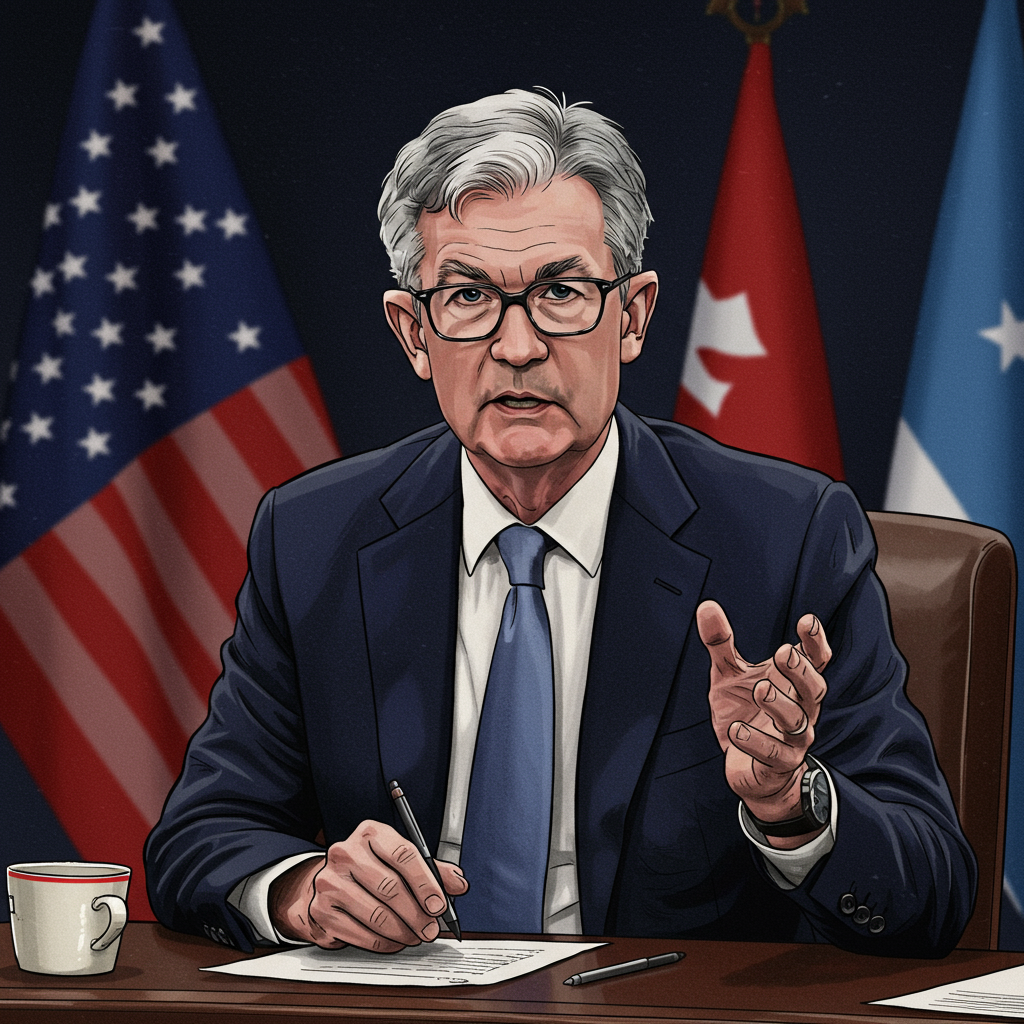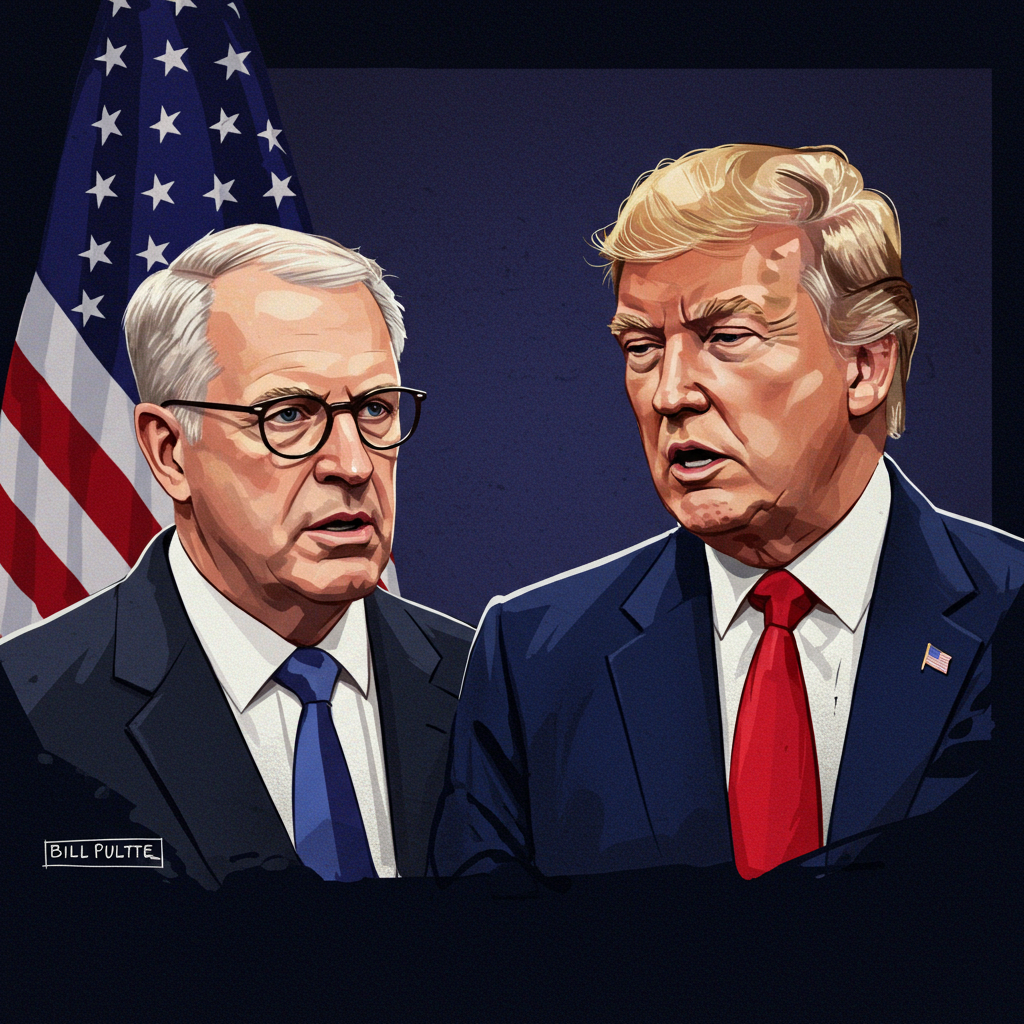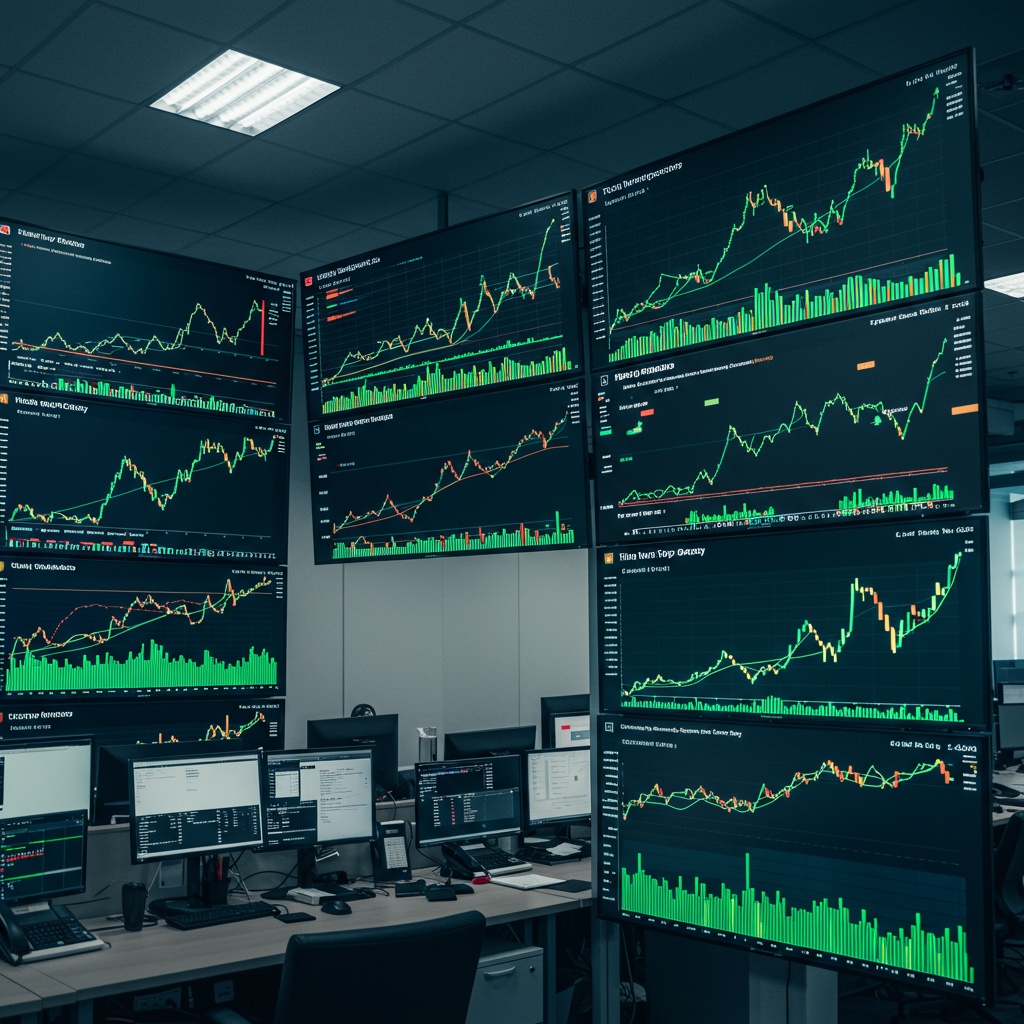Federal Reserve Chair Jerome Powell recently made a candid admission. He stated clearly that the U.S. central bank would likely have already reduced interest rates this year. The sole factor preventing this action? Then-President Donald Trump’s extensive tariff policies.
Speaking at a European Central Bank forum, Powell confirmed this direct link. He explained that the scale and nature of the proposed tariffs introduced earlier in the year were the key drivers behind the Fed’s decision to pause.
Tariffs Drove Fed’s Rate Decision Pause
Powell’s statement was direct when asked if rate cuts would have happened without Trump’s controversial plan. He replied, “I think that’s right.” This highlights the significant impact of trade policy on monetary strategy.
He elaborated that upon seeing the size of the tariffs, the Fed essentially “went on hold.” This pause followed a series of rate reductions at the end of the previous year. The reason was clear: “essentially all inflation forecasts for the United States went up materially as a consequence of the tariffs.”
The abrupt rise in expected inflation forced the Fed to reassess its trajectory. Central bankers needed to understand the full implications before acting.
Navigating Uncertainty and Economic Signals
This admission came as the Federal Reserve maintained a holding pattern on interest rates. This stance persisted despite considerable pressure from the White House. The Fed last kept its key borrowing rate steady.
The fed funds rate remained in the range of 4.25% to 4.5%. This level has been consistent since December. The Fed’s policy-setting Federal Open Market Committee (FOMC) had previously indicated potential rate reductions. Their “dot plot” projections suggested two cuts might occur by the end of 2025.
However, Powell also emphasized the Fed was “well positioned” to remain in a wait-and-see mode. He reiterated this cautious approach when asked about the timing of future cuts.
Waiting on Data, Meeting by Meeting
Powell addressed speculation about a July rate cut. He stated he “really can’t say” if that would be too soon. His answer underscored the data-dependent nature of the Fed’s decisions.
“It’s going to depend on the data,” he emphasized. Market expectations seemed to align with caution. According to the CME FedWatch tool, fed funds futures traders were pricing in a more than 81% likelihood of rates remaining steady at the upcoming policy gathering. This reflected heightened uncertainty.
“We are going meeting by meeting,” Powell affirmed during the panel. He stressed flexibility in their approach. “I wouldn’t take any meeting off the table or put it directly on the table. It’s going to depend on how the data evolve.”
The Shadow of Trade Policy Uncertainty
The widespread tariffs introduced by the Trump administration created significant uncertainty. This uncertainty rippled across financial markets. Initial responses included a stock market tumble and soaring bond yields.
The U.S. dollar also weakened initially. Businesses faced a state of inaction regarding future investment plans. Experts warned this carried the risk of exacerbating a potential recession.
Powell stated that the prudent approach was to “wait and learn more and see what those effects might be.” He noted that the full impacts of the tariffs had not yet become clear. Reports indicated US manufacturing remained weak, with low new orders, suggesting tariffs made business planning difficult. Analysis suggested prices for products made in China rose faster than overall inflation, indicating pressure on consumer costs. Corporate margins also faced a key risk, with companies deciding whether to pass costs to consumers or absorb them.
Political Friction and Central Bank Independence
The Fed’s decision to hold rates steady drew sharp criticism from President Trump and his administration. They publicly admonished Powell for not lowering borrowing costs. Trump previously called Powell “terrible” and a “very average mentally person.” Other reports mentioned him using terms like “numbskull” and “moron.” He even reportedly delivered a handwritten note criticizing Powell for maintaining higher rates than other nations, claiming it cost the USA significantly.
This public criticism disrupted a longstanding, informal agreement since the 1970s. This tradition held that the Fed would remain apolitical. Chairs would not comment on White House policy. Presidents would refrain from directing the Fed on interest rates.
When asked if he would continue as a Fed governor after his term as chair ends, Powell offered no comment. “I have nothing for you on that today,” he said. His term as Chair concludes in 2026, while his governor position runs until 2028.
Defending the Fed’s Apolitical Role
Global trade policy and Trump’s attacks took center stage at the European Central Bank event. Powell shared the panel with other global central bank leaders. They faced questions about how they would handle similar situations.
European Central Bank President Christine Lagarde expressed solidarity with Powell. She praised his commitment to an “apolitical, data-driven approach.” Lagarde described him as epitomizing the standard of a “courageous central banker.”
Powell reiterated the critical importance of the Fed operating in a “completely non-political way.” He stated that the institution does not take sides. It stays out of matters outside its purview. The focus remains solely on ensuring economic stability for the benefit of all people. A stable economy, he argued, allows people to live their “best economic lives.” It also provides a stable environment for elected policymakers to make important decisions.
Internal Views and Future Rate Paths
Despite the overall holding pattern, some differing perspectives emerged within the Fed. Two officials, Vice Chair Michelle Bowman and Governor Christopher Waller, recently suggested a rate cut could be considered as early as July. However, this possibility was conditioned on tariff-induced inflation proving mild. They did not advocate for the larger cuts Trump desired.
Powell himself indicated that a “solid majority” of Fed officials anticipate rate reductions becoming appropriate later in the year. Yet, he remained non-committal on specific timing. He would not definitively say if July was too soon. He reiterated his “meeting by meeting” approach.
During a Senate hearing, Powell explicitly linked the worsening Fed economic projections to the “possible effects in the short-term of tariffs.” He confirmed that updated forecasts showing substantially higher inflation (from 2.5% to 3.1%), higher unemployment (from 4.3% to 4.5%), and lower economic growth (from 2.1% to 1.4%) were driven by trade policy uncertainty. This contrasts with previous forecasts.
Trump’s Evolving Trade Strategy
Under pressure from self-imposed deadlines, the Trump administration pursued a new strategy. Instead of large, comprehensive trade deals, the focus shifted to smaller, quicker “mini deals.” This was highlighted as the July 9th deadline loomed for potential reimposition of the harshest tariffs.
The goal was to allow participating countries to avoid steep duties. Existing tariffs would likely remain while broader talks continued. The July 9th deadline marked the expiration of a “pause” on sweeping April duties. Signals were mixed regarding the deadline’s flexibility. Trump suggested he wouldn’t need to extend it. Treasury Secretary Scott Bessent warned “recalcitrant” countries about the looming “Liberation Day” tariffs.
Global Negotiations Under the Tariff Cloud
Several specific country negotiations were underway. Trump publicly threatened Japan with new, higher tariffs via social media, citing rice export issues. This came just before the deadline, following months of talks where Japan sought auto duty exemption. Without a deal, broad tariffs could return.
The European Union reportedly considered accepting a universal 10% tariff but sought exemptions for key sectors. They pushed for quotas and exemptions for autos, steel, and aluminum. EU negotiators hardened their stance, insisting the US drop existing tariffs immediately as part of any deal. Washington pursued a 10% baseline.
Canada scrapped a planned digital services tax targeting US tech companies. This aimed to revive stalled talks. Reports indicated a goal to reach an agreement by July 21st. Trump had previously threatened new tariffs on Canadian goods if no deal was reached swiftly.
India was reported to be close to sealing an interim trade agreement. This would be a step towards a comprehensive bilateral accord. It could be the first such interim deal with a major US trading partner. South Korea sought a deadline extension while negotiating over non-tariff barriers and defense.
The US and China reached a deal to resume rare earth exports. This aimed to ease tensions before broader duties could potentially rise by 50%. The US-UK deal was cemented, reducing levies on some parts but keeping 10% tariffs on exports. Steel/aluminum tariffs remained unresolved. Mexico negotiated a quota deal to potentially lower 50% steel tariffs.
Frequently Asked Questions
Why did Fed Chair Powell say tariffs prevented rate cuts?
Fed Chair Jerome Powell stated that the uncertainty and predicted impact of President Trump’s widespread tariffs on imported goods were the primary reasons the central bank held off on reducing interest rates. He explained that the tariffs caused inflation forecasts for the U.S. economy to rise significantly. This necessitated a pause in rate cuts to assess the true economic effects before adjusting monetary policy. The Fed opted for a “wait-and-see” approach until the data clarified the impact of the trade measures.
What economic data is the Fed watching before deciding on rate cuts?
The Federal Reserve is closely monitoring various economic data points to gauge the impact of trade policies and overall economic health before deciding on interest rate adjustments. Key areas include inflation trends (especially how tariffs affect prices), employment figures (maximum employment is a Fed mandate), and overall economic growth (GDP). They are specifically watching for the actual effects of tariffs to appear in these reports. Powell stated decisions would be made “meeting by meeting,” depending on how the data evolves, indicating a flexible, data-driven approach to future policy shifts.
How are Trump’s trade policies currently impacting the US economy?
According to information discussed by Fed officials and in various reports, Trump’s trade policies, particularly tariffs, are creating significant uncertainty. This affects business investment planning. Tariffs are linked to weak manufacturing activity, rising prices for consumer goods, and risks to corporate profit margins. Federal Reserve economic projections explicitly factored in the short-term effects of tariffs, contributing to forecasts of higher inflation, increased unemployment, and slower economic growth compared to earlier estimates. The uncertainty also impacts global markets and trade relationships.
Conclusion
Fed Chair Jerome Powell’s clear statement confirms the profound impact of President Trump’s tariff policies on U.S. monetary policy. The resulting uncertainty and rising inflation forecasts directly caused the Federal Reserve to pause its interest rate cutting cycle. This decision highlights the complex interplay between trade policy, inflation, economic growth, and the Fed’s mandate for stability. Despite political pressure, the Fed remains committed to a data-dependent, apolitical approach, monitoring the evolving economic landscape shaped significantly by global trade tensions. Future interest rate decisions will hinge on how these effects manifest in the incoming economic data, keeping markets and policymakers on edge.




